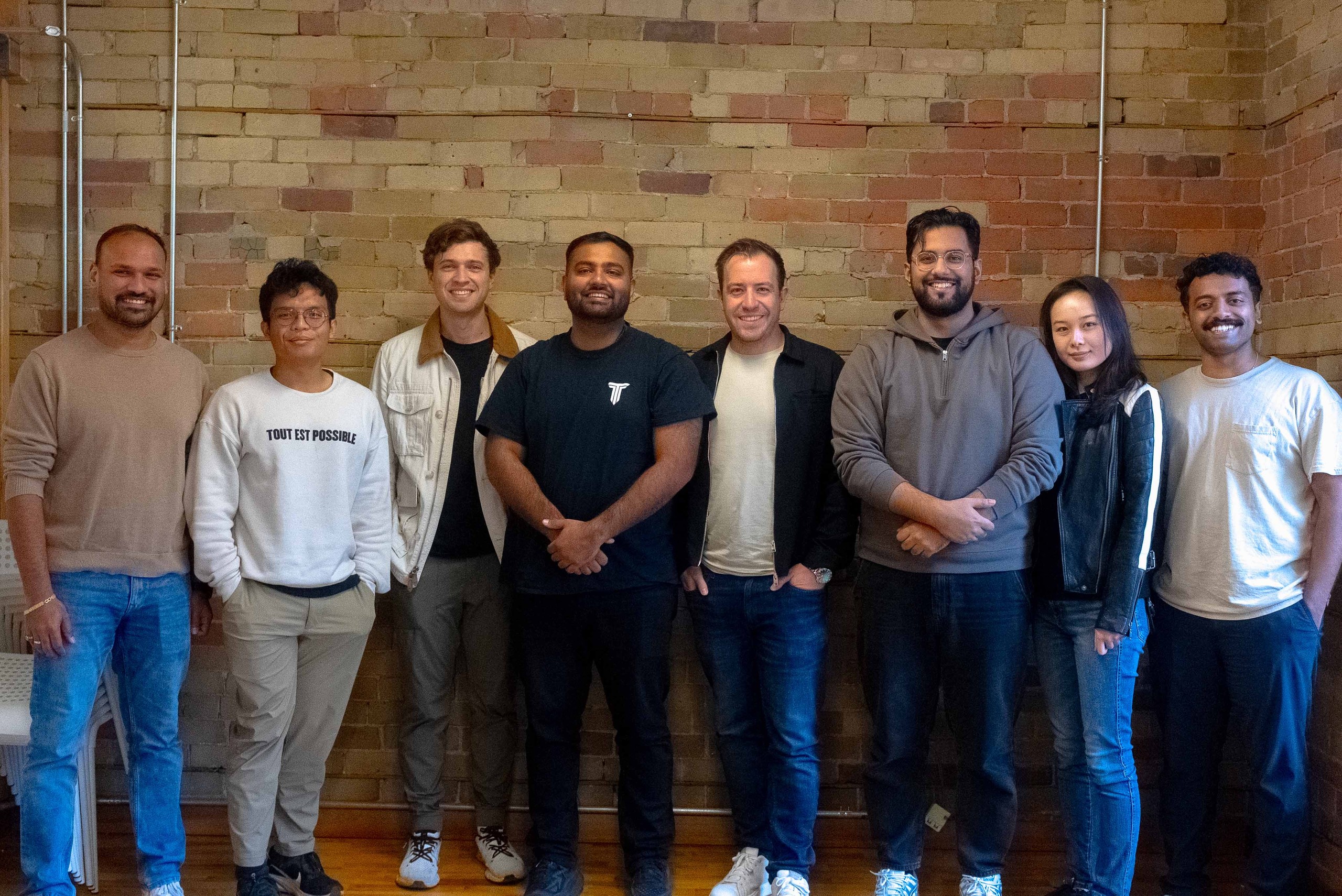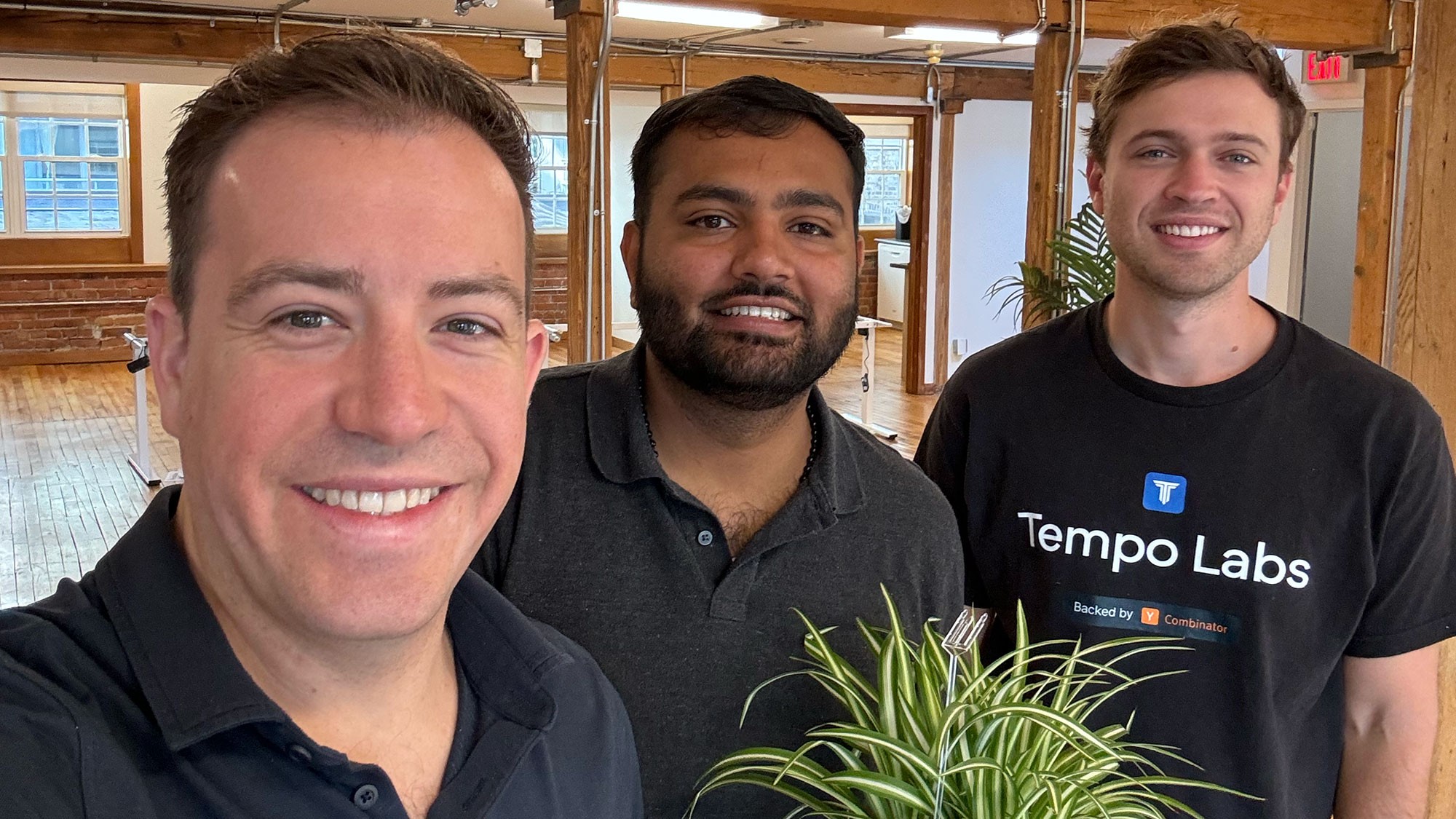How was this content?
- Learn
- Rewriting the relationship code: Tempo Labs, AWS, and the power of three
Rewriting the relationship code: Tempo Labs, AWS, and the power of three

Engineering, product, and design (EPD): the three pillars of building, and the power trio behind every great product. In a typical workflow, design teams create layouts and components, often using tools like Figma. Engineering teams need those designs turned into clean, working React code. And product teams need both sides to move quickly and in sync to ensure features ship.
However, this workflow is often less ‘flow’ and more friction. Engineering teams spend time rewriting code to match design changes. Product managers create a bottleneck by slowing iteration with (cumbersome but critical) customer feedback and new ideas. Designers must spend time reviewing, revising, and performing quality assurance (QA) to ensure what is built is up to spec with designs.
A lack of cohesion between these teams adds to the complexity: “there’s no easy way for any of them to collaborate on code,” says, Kevin Michael, CEO and co-founder of Tempo Labs. Until now. With its platform, the Toronto-based startup has created “the easiest and the best way for EPD cross-functional teams to collaborate on code.” Tempo identified major challenges inherent in the previous generation of low-code tools: “We were frustrated with how poorly they integrated with existing production grade react codebases, and we built Tempo to solve that problem,” says Michael.
Cohesion and collaboration
The elements of cohesion and collaboration underpinned Tempo’s vision for its platform, but they also influenced other decisions the company made in its early days. When creating the platform, the startup team wasn’t just looking for a solutions provider; it sought a partner. The whole ecosystem within the cloud computing world, says Brandon Palin, Tempo’s head of growth, “has effectively become, to a certain extent, a commodity.” Lots of companies have the tech, can ‘do’ AI, and can produce standardized outputs. Tempo was looking at the “bigger picture”—questioning not just the relationship a partner can provide today, but the opportunities it can unlock for the future. “Ultimately, when we were looking for a partner, it was someone that we could grow with long term, that was willing to invest in us,” says Palin. Tempo found that partner in AWS.
Tempo has been working with AWS since early 2025, migrating its entire core infrastructure to AWS and leveraging solutions including Amazon Bedrock, Amazon Elastic Kubernetes Services (EKS), Amazon EC2 compute, Amazon S3, and AWS Databases and AWS Networking services. AWS “went above and beyond the scope of what we would see from others,” Palin says, offering Tempo another powerful trio: support on the technical side (including AI), business account management, and exposure: to new industries, markets, potential investors, and the wider startup community.
Redefining software development
As a result, Tempo has grown its business and developed a platform which today enables 75-80 percent of designer-generated code to be re-used, accelerating the product development lifecycle. Empowering designers to create user interfaces (UIs) themselves removes the process and “core pain” of design QA, by ensuring “everything is pixel-perfect from the get-go,” says Michael. Engineers meanwhile save time, as the platform displaces low-value work through automated code generation, visual editing that syncs with code, design system integration, and smoother handoff to other teams. Instead of focusing on this low value work, teams can dedicate attention to high value tasks, creating “more time to focus on the business logic and the complex intellectual property, not boilerplate frontend code.”
The code-first design tool “empowers product designers and product managers,” says Michael, and “essentially redefines the process of software development,” creating a fast-moving, collaborative ecosystem. Users are no longer merely building prototypes, “you're actually building products or features that can get merged into production.”
Complexity may be reduced, but it’s never done so at the expense of creativity. “A core differentiator for us is our emphasis on design,” says Michael. “A lot of the AI generated software products all look the same.” As such, Tempo “invested heavily in design features to reach the sort of parity with state-of-the-art design tools, so that sophisticated designers can control every pixel by hand.” This creates an environment within the platform that’s familiar to product designers, while producing output that’s ultimately code based. In doing so, designers “are able to better communicate with the development side of the company, so you're reducing silos and breaking down barriers of traditional software,” adds Palin.
Upping the Tempo
To develop its platform to this level was “heavily technical and complex on the cloud infrastructure side,” says Michael; potential hurdles for any startup. Leveraging the right technology was important, but, he continues, “a cloud partner to us is not just another vendor, it's really a key partnership.” From an early stage in Tempo’s journey, “AWS really believed in us and was very, very supportive.” This confidence, adds Palin, “really accelerated us making the decision to migrate over.”
Migrating to AWS involved Tempo moving the entirety of its server infrastructure to EKS. The startup accessed AWS Credits through the AWS Migration Acceleration Program (MAP) to help fund the migration, but it also gained additional support through the partnership. “It goes beyond just credits,” says Palin, with AWS engineers working alongside the team, as well as providing “access to free resources, supporting the infrastructure build, supporting our company, and making sure we maintain our infrastructure.”
This close partnership and technical assistance was critical in the month following Tempo’s platform launch, during which its computation requirements quickly evolved and the company experienced a period of rapid growth. “The AWS team was responsive at all hours, always available, working with us to essentially give us access to what we needed to be able to support this massive uptick,” says Palin. This extensive support went beyond the norms of a typical partnership; far from being merely transactional, “we were dealing with individuals.” As a fast-moving startup “we can't wait 24 hours, we need outcomes in minutes,” Palin continues. “It was really important to have that kind of relationship established and more importantly, the willingness of the AWS team to support it.”
AWS also provided access to the AI tools which are critical to Tempo’s platform. “AWS has a deeper partnership with Anthropic than any of the other cloud providers,” explains Michael, so the decision to work with AWS was a strategic one that’s helping pave the way for future innovation. The company is currently working closely with the AWS Generative AI Innovation Center (a “delightful engagement!” says Palin) to build a new AI agent to improve the product experience.
The upgrades and investment from AWS have resulted in two things, says Michael: “increased scalability and a lot more cost efficiency.” Since moving to AWS, Tempo has seen a 5X reduction in cloud costs while increasing scalability and reaching well over 100,000 users.
Breaking through the clouds

In addition to gaining access to tools and expertise, the relationship has also brought greater exposure for Tempo. “As an early-stage company, especially being a YC company, we had a level of exposure to AWS and, frankly speaking, the whole ecosystem within the cloud computing world.” This has come about through the diverse and extensive partner network of AWS, with Tempo able to draw on partner skills, often supported by AWS funding.
Events, which aim to champion the success and nurture the growth of the startup community, have also helped Tempo increase its visibility and network. Palin namechecks the likes of Toronto Tech Week and the upcoming AWS re:Invent as “great opportunities in terms of additional exposure.” He continues, “being able to connect with the companies that are also succeeding within the area is powerful,” providing both a business opportunity and a learning environment. “We've kind of built a micro ecosystem here in Toronto, and AWS has helped fuel that fire.”
Macro markets
Nurturing startups on a local level is important, but the partnership with AWS is also enabling Tempo’s growth on the worldwide stage. “AWS is global and that gives us an advantage as a Canadian business in terms of going to market outside of Canada,” says Palin. When it comes to a growth strategy, timing is everything. “You want to be in a position where there's a level of stability,” explains Palin. “You have to make sure the timing is allocated correctly to ensure the value for enterprise groups.”
With Tempo having received support from AWS from its early days, the company has now reached that position, and is “leveraging AWS Marketplace as a starting point for us into that enterprise ecosystem,” Palin continues. This will “play a huge role in our shift from initial levels of adoption where you have SMB, to individual players, to us moving more up market in our sales strategy,” he says.
By reaching a broader customer ecosystem via AWS Marketplace, Tempo is aiming to help enterprise-level customers “learn how to evolve their orgs, their software development lifecycle, their definitions of roles and responsibilities, and set guardrails to ensure high code quality.” The company is continuing to innovate with AWS “to help every business on AWS ship faster: to collaborate better and leverage Bedrock to accelerate their software development lifecycle,” explains Palin. This is an example of the “deep partnership” in action, says Michael; one in which “things are mutually aligned, like a deep level of support, care, and investment.”
Despite the diversification of its customer base, Tempo’s mission remains unchanged: to break down boundaries and foster collaboration between teams. “We're really excited about what the future entails in terms of positioning the product in a way that’s less about the individual and more about the collective,” says Palin.
And Tempo itself remains committed to working as a collective with partner AWS. With an AWS Marketplace listing on the horizon, plus product development and company growth, Tempo will continue to collaborate with AWS “to figure out what's the best opportunity for us,” says Palin. “And frankly speaking, there will be many more to come. We're thinking long term; and so is AWS.”
How was this content?